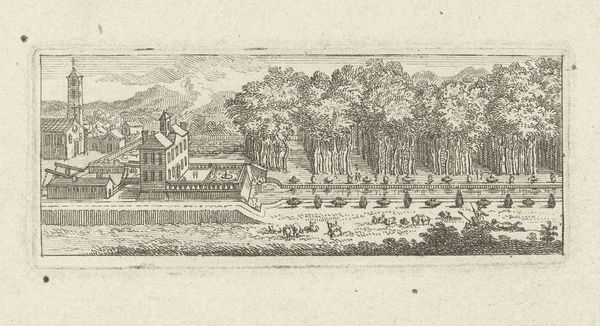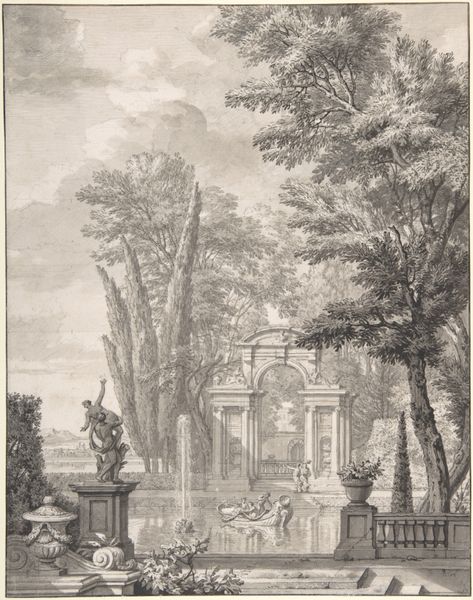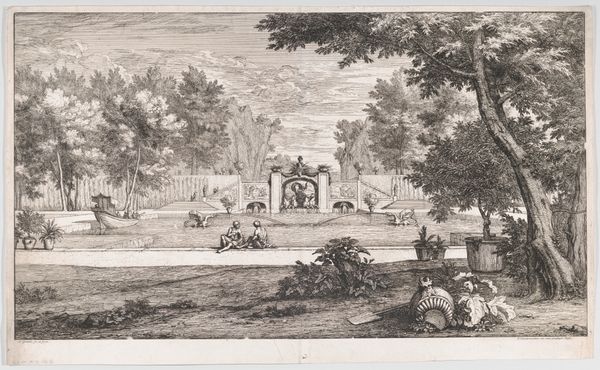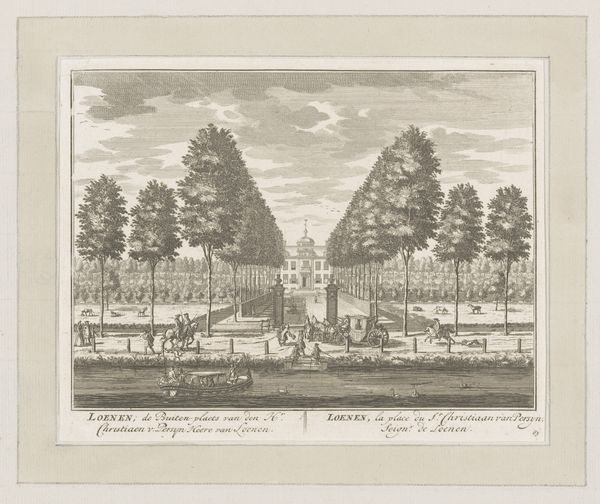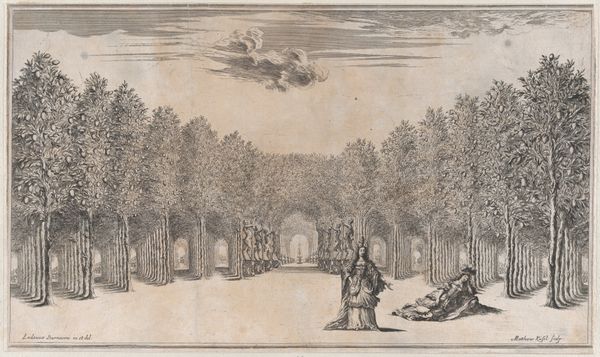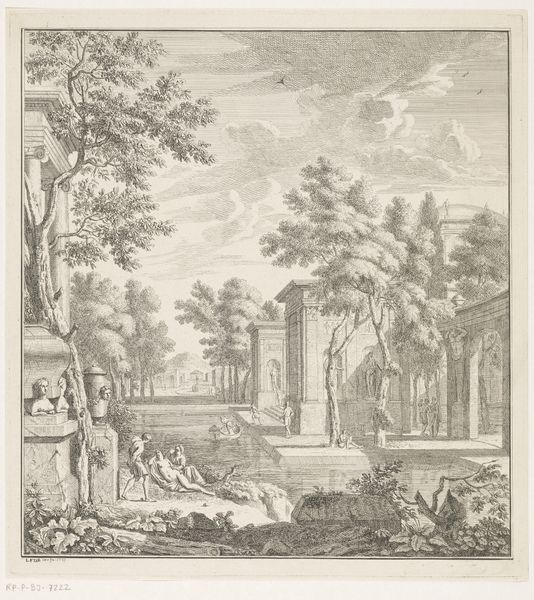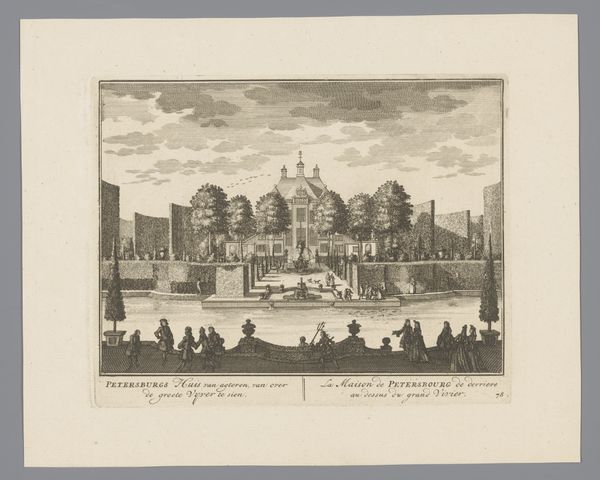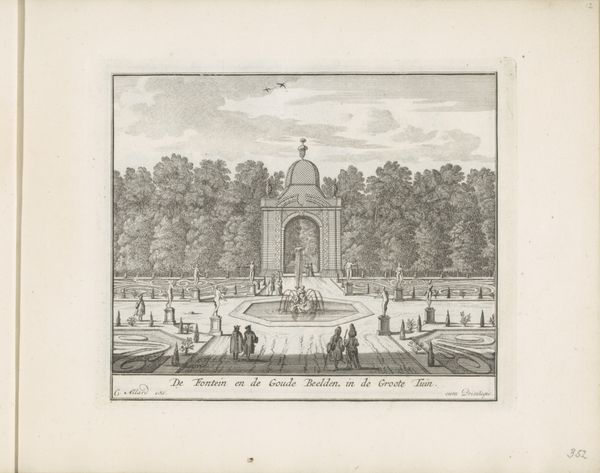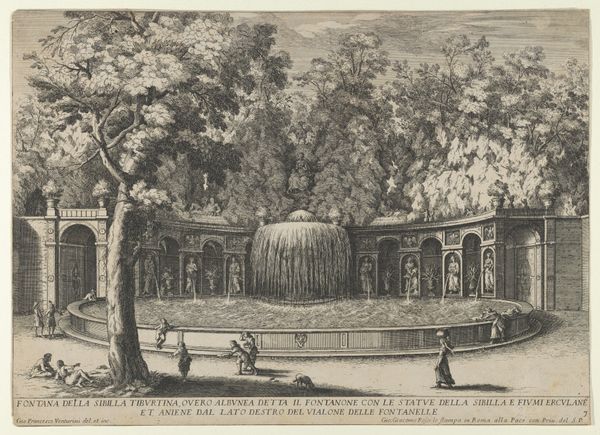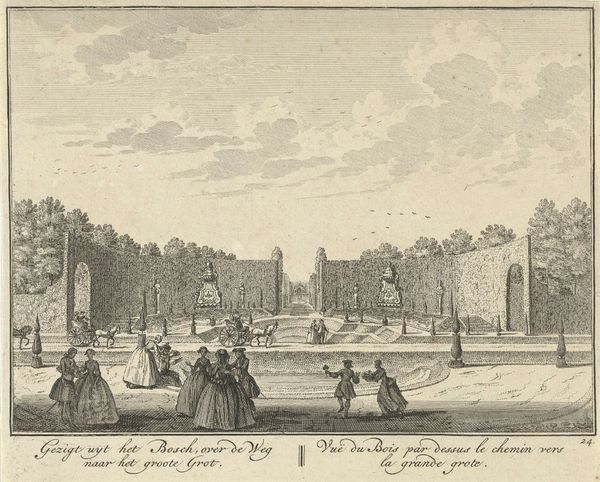
Wasserkunst in einem Park, in der Mitte ein künstliches Felsentor mit einem Neptun, rechts auf dem Teich eine Gondel
0:00
0:00
drawing, gouache, ink, pencil, architecture
#
drawing
#
baroque
#
gouache
#
pencil sketch
#
landscape
#
ink
#
pencil
#
14_17th-century
#
architecture
Copyright: Public Domain
Editor: Here we have Isaac de Moucheron's "Wasserkunst in einem Park, in der Mitte ein künstliches Felsentor mit einem Neptun, rechts auf dem Teich eine Gondel," or, "Water Art in a Park, in the Middle an Artificial Rock Gate with a Neptune, to the Right on the Pond a Gondola". It’s rendered in ink, pencil, gouache, a drawing of baroque style… It's all rather monochromatic, almost ghostly. What strikes you when you look at this piece? Curator: Notice how the architecture and nature are equally represented. The artificial rockwork, the precisely placed gondola – they all point to the deliberate manipulation of the landscape by the aristocracy. This wasn’t just about aesthetics, but also about demonstrating power through controlling and consuming natural resources and the labor involved in constructing such elaborate scenes. Editor: So, it's about the labor of controlling nature? Curator: Precisely. Consider the materiality itself - the ink, pencil, gouache. These were manufactured materials, bought and used for the specific purpose of representing this constructed reality. Even the act of drawing, the skill and labor Moucheron invested, reinforces the hierarchy being depicted. It translates the physical labor of creating the garden to the artistic one, each mirroring the other's purpose. Editor: So, it’s not just a pretty picture of a park. Curator: Absolutely not. The drawing becomes a record, and perhaps even a celebration, of a specific type of consumption and power. Can we truly separate the aesthetics from the economic realities they reflected and perpetuated? Editor: I never thought about the materials themselves in that way. The deliberate choices highlight social stratification and production. I’ll definitely see landscapes differently now. Curator: That's precisely the aim - to look beyond the surface and see the complex relationships embedded in the art's very creation and representation.
Comments
No comments
Be the first to comment and join the conversation on the ultimate creative platform.

